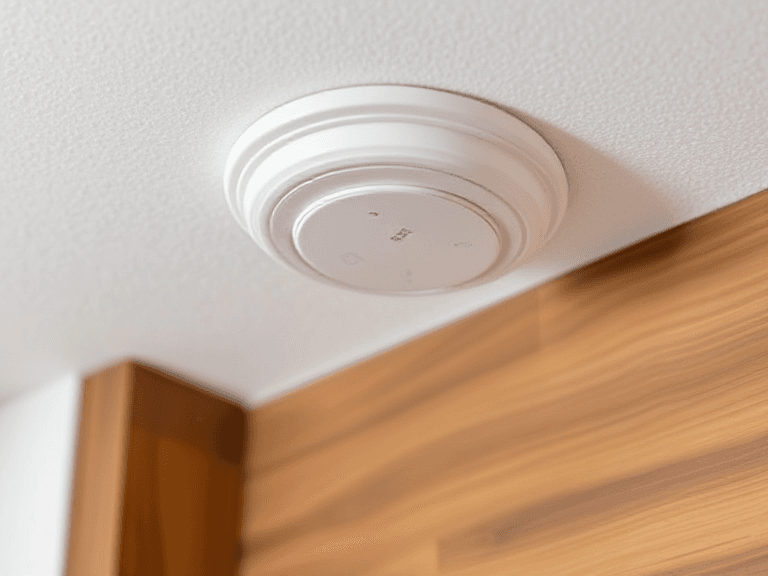When it comes to home safety, one of the simplest yet most effective measures you can take is ensuring your smoke detectors and carbon monoxide (CO) detectors are properly installed and maintained. These small devices play a big role in protecting lives, giving you peace of mind by alerting you to potential dangers before they escalate into emergencies.
Why Smoke and Carbon Monoxide Detectors Are Essential
Smoke Detectors: Your First Line of Defense Against Fire
Fires can start without warning and spread rapidly, leaving little time to react. Smoke detectors are designed to detect the early signs of fire, such as smoke particles in the air, and sound an alarm to alert occupants. Early detection not only allows for a timely evacuation but also increases the chances of extinguishing the fire before it causes significant damage.
Carbon Monoxide Detectors: Guarding Against the Silent Killer
Carbon monoxide is a colorless, odorless gas that is virtually undetectable without a specialized sensor. It’s produced by burning fuel in appliances such as furnaces, water heaters, stoves, and fireplaces. A CO leak can lead to symptoms ranging from headaches and dizziness to life-threatening poisoning. Carbon monoxide detectors alert you to dangerous levels of the gas, enabling you to take action before it’s too late.
Choosing the Right Detectors for Your Home
Types of Smoke Detectors
- Ionization Smoke Detectors: Best for detecting fast, flaming fires. They’re sensitive to small smoke particles but may be prone to false alarms from cooking or steam.
- Photoelectric Smoke Detectors: Ideal for detecting slow, smoldering fires. They’re less likely to trigger false alarms and are excellent for bedrooms and living areas.
- Dual-Sensor Smoke Detectors: Combine both ionization and photoelectric technologies for comprehensive protection.
Types of Carbon Monoxide Detectors
- Plug-In CO Detectors: Easy to install and perfect for areas near fuel-burning appliances.
- Battery-Powered CO Detectors: Provide flexibility in placement and continue working during power outages.
- Combination Smoke and CO Detectors: Save space and provide dual protection in one device.
Installation Best Practices
Proper installation is crucial for the effectiveness of your detectors. Here are some guidelines:
- Smoke Detector Placement:
- Install smoke detectors on every level of your home, including the basement.
- Place them inside each bedroom and outside sleeping areas.
- Position them on the ceiling or high on walls, as smoke rises.
- Carbon Monoxide Detector Placement:
- Install CO detectors near bedrooms so alarms can wake occupants during the night.
- Place them on every level of your home, especially near fuel-burning appliances.
- Avoid installing them near windows, doors, or ventilation systems to prevent false readings.
- Combination Detector Placement:
- Follow the manufacturer’s instructions for optimal placement to ensure both smoke and CO detection.
Regular Maintenance for Maximum Protection
Even the best detectors won’t work effectively without proper upkeep. Here’s how to keep them in top condition:
- Test Your Detectors Monthly:
- Press the test button to ensure the alarm sounds correctly.
- Replace Batteries Annually:
- Many detectors feature low-battery alerts, but it’s best to replace batteries proactively once a year.
- Clean Detectors:
- Dust and debris can interfere with sensors. Use a vacuum cleaner or a soft brush to clean the detectors regularly.
- Replace Detectors When Needed:
- Smoke detectors should be replaced every 10 years, while CO detectors typically last 5-7 years.
- Check the manufacturing date on the device to determine its age.
Why Professional Installation and Servicing Matter
While installing and maintaining detectors may seem straightforward, professional assistance ensures the job is done correctly. Here’s why hiring a professional like ZZ The HandyMan can make a difference:
- Expertise and Experience:
- Professionals understand local building codes and can recommend the best detectors for your specific needs.
- Proper Placement:
- Ensuring detectors are installed in optimal locations for maximum effectiveness.
- System Integration:
- For added safety, professionals can integrate detectors with home security systems or smart home devices.
- Comprehensive Maintenance:
- Regular servicing by a professional ensures that detectors are always in working condition, reducing the risk of false alarms or missed alerts.
Beyond Detectors: Additional Safety Tips
- Create an Emergency Plan:
- Develop a fire escape plan and practice it with your family. Ensure everyone knows the quickest exits and a designated meeting spot outside.
- Install Fire Extinguishers:
- Place fire extinguishers in high-risk areas like the kitchen, garage, and workshop.
- Monitor Appliance Safety:
- Schedule regular maintenance for fuel-burning appliances to minimize the risk of CO leaks.
- Educate Your Household:
- Teach everyone in your home how to recognize the sounds of smoke and CO alarms and how to respond appropriately.
Trust ZZ The HandyMan for Your Safety Needs
At ZZ The HandyMan, we understand the importance of home safety. Whether you need new smoke and CO detectors installed, existing ones serviced, or expert advice on choosing the right devices, we’ve got you covered. Our skilled team ensures that every detector in your home is correctly placed and functioning flawlessly, providing you with the ultimate peace of mind.
Protecting your home and family starts with small, proactive steps. Don’t wait until it’s too late—contact ZZ The HandyMan today to schedule your smoke and carbon monoxide detector installation or servicing. Together, we can create a safer environment for you and your loved ones.


